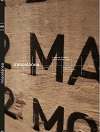Graphology as a Linguistic Level of Analysis: Definition, Theoretical Background and Proposals for Categorization
DOI:
https://doi.org/10.26754/ojs_misc/mj.20157169Palabras clave:
graphology, graphemics, spelling, punctuation, typography, layoutResumen
The present paper aims at presenting some fundamental ideas that clarify the concept of graphology as a linguistic level of analysis. Departing from the lack of a theoretical apparatus at this level, this article explains what graphology means, what has been previously published on this matter and how this can be categorized into different sub-levels of study according to Levenston (1992) and Lennard (2005). This paper takes for granted Firth’s (1957) belief that all branches of linguistics are concerned with meaning; and that graphology should therefore receive due attention from linguists as all the other linguistic levels (i.e. lexis, grammar or phonology) have. The results of this research indicate that graphology as a system has been neglected both in theoretical and in practical terms. Further work in this field is therefore needed in order to facilitate the analysis of visual elements in literary and non-literary texts.
Descargas
Referencias
Augst, Gerhard. (ed.) 1986. New Trends in Graphemics and Orthography. Berlin: De Gruyter.
Bray, Joe, Miriam Handley and Anne C. Henry. (eds.) 2000. Ma(r)king the Text: The Presentation of Meaning on the Literary Page. Aldershot: Aldergate.
Coulmas, Florian. (1996) 1999. The Blackwell Encyclopedia of Writing Systems. Oxford: Blackwell.
—. (1989) 1991. The Writing Systems of the World. Oxford: Basil Blackwell.
Crystal, David and Derek Davy. 1969. Investigating English Style. Bloomington: Indiana UP.
Daniels, Peter. 1991. “Is a structural graphemics possible?”. Locus Forum 18: 528- 537.
Enciclopaedia Britannica 2011. Encyclopædia Britannica Ultimate Reference Suite. Chicago: Encyclopædia Britannica. CD-Rom.
Firth, John Rupert. 1957. “General Linguistics and Descriptive Grammar”. In Firth, J. R. Papers in Linguistics, 1934-1951. London: Oxford UP: 216-228.
Fisiak, Jacek. 1968. A Short Grammar of Middle English. Part One: Graphemics, Phonemics and Morphemics. London: Oxford UP.
Francis, W. Nelson. 1962. “Graphemic analysis of late Middle English manuscripts”. Speculum 37 (1): 32-47.
Haas, William. 1976. “Writing: the basic options”. In Haas, William (ed.) Writing without Letters. Manchester: Manchester U. P.: 131-208.
Hall, Robert A. 1960. “A theory of graphemics”. Acta Linguistica 8 (1): 13-20.
—. 1963. “Graphemics and linguistics”. In Hall, Robert A. (ed.) Symposium on Language and Culture. Proceedings of the 1962 Annual Spring Meeting of the Ethnological Society. Seattle: American Ethnological Society.53-59.
Halliday, Michael, Angus Mcintosh and Peter streVens. 1964. The Linguistic Sciences and Language Teaching. London: Longman.
Hamp, Eric. 1959. “Graphemics and Paragraphemics”. Studies in Linguistics (14) 1-2: 1-5.
Harris, Roy. 1995. Signs of Writing. P. London: Routledge.
Korn, Gail E. 2000. “[T]o correspond with you in green-covered volumes: George Eliot, G. H. Lewes and the production of her books”. In Bray, Joe, Miriam Handley and Anne Henry (eds.) Ma(r)king the Text: The Presentation of Meaning on the Literary Page. Aldershot, UK: Ashgate: 12-25.
Kress, Gunther. 1996. “What is a mode?”. In Jewitt, Carey (ed.). The Routledge Handbook of Multimodal Analysis. London: Routledge: 54-67.
Kress, Gunther and Theo Van Leeuwen. 1996. Reading Images. The Grammar of Visual Design. London: Routledge.
Lennard, John. (1996) 2005. The Poetry Handbook. Oxford: Oxford University Press.
Levenston, Edward A. 1992. The Stuff of Literature: Physical Aspects of Texts and Their Relation to Literary Meaning. Albany: State University of New York Press.
Levertov, Denise. 1979. “On the function of the line”. Chicago Review 30 (3): 30-36.
Mcintosh, Angus. 1961. “Graphology and meaning”. Archivum Linguisticum 13: 107– 120.
Nänny, Max. 2001. “Iconic functions of long and short lines”. In Nänny, Max and Olga Fischer. (eds). Form Miming Meaning: Iconicity in Language and Literature 2. Amsterdam: Benjamins: 157-188.
Norgaard, Nina. 2009. “The semiotics of typography in literary texts. A multimodal approach”. Orbis Litterarum 64 (2): 141-160.
—. 2010a. “Modality, commitment, truth value and reality claims across modes in multimodal novels”. JLT 4 (1): 63-80.
—. 2010b. “Multimodality: extending the toolkit”. In McIntyre, Daniel and Beatrix Busse (eds.). Language and Style. Houndmills: Palgrave: 433-448.
—. 2010c. “Teaching multimodal stylistics”. In Jeffries, Leslie and Daniel McIntyre (eds.). Teaching Stylistics. London: Palgrave MacMillan: 221–238.
The Oxford English Dictionary. 2013. Oxford: Oxford University Press. On-line. 20th deceMBer, 2013. <http://WWW.oed.coM>.
Sampson, Geoffrey. 1985. Writing Systems: A Linguistic Introduction. Stanford: Stanford University Press.
Scott, David. 2000. “Signs in the text: the role of epigraphs, footnotes and typography in clarifying the narrator-character relationship in Stendhal’s Le Rouge at le noir”. In Bray, Joe, Miriam Handley and Anne Henry (eds.). Ma(r)king the Text: The Presentation of Meaning on the Literary Page. Aldershot, UK: Ashgate: 26-34.
Stockwell, Robert P. 1952. Chaucerian Graphemics and Phonemics: A Study in Historical Methodology. Unpublished Ph.D. thesis. Virginia: University of Virginia.
Tartakovski, Roi. 2009. “E. E. Cummings’ parentheses: punctuation as poetic device”. Style 43 (2): 215-247.
Vachek, Josef. 1973. Written Language: General Problems and Problems of English. The Hague: Mouton & Co.
Van Leeuwen, Theo. 2005. Introducing Social Semiotics. Abingdon: Routledge.
—. 2006. “Towards a semiotics of typography”.
Information Design Journal + Document Design 14 (2): 139-155.
Van Leeuwen, Theo and Carey JeWitt. 2001. Handbook of Visual Analysis. London: Sage.
Van Peer, William. 1993. “Typographic Foregrounding”. Language and Literature 2 (1): 49-61.
Wales, Katie. (1994) 2001. A Dictionary of Stylistics. London: Longman.
White, Glyn. 2000. “The Critic in the text: footnotes and marginalia in the epilogue to Aldasdair Gray’s Lanark: A Life in Four Books”. In Bray, Joe, Miriam Handley and Anne Henry (eds.). Ma(r)king the Text: The Presentation of Meaning on the Literary Page. Aldershot, UK: Ashgate: 55-70.
Descargas
Publicado
Número
Sección
Licencia
Derechos de autor 2015 Eva Gómez-Jiménez

Esta obra está bajo una licencia internacional Creative Commons Atribución-NoComercial 4.0.


